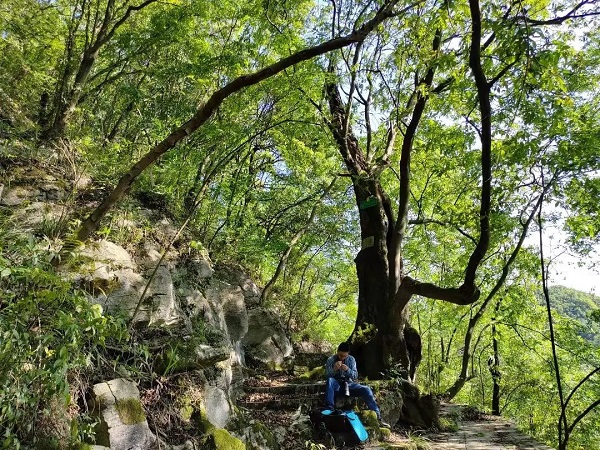Guiyang to enhance protection of rare and endangered wild plants

Carya kweichowensis can be found in Tangbian village, Qingzhen county-level city, Guiyang. [Photo/WeChat account of Zhizhi Guiyang]
Guiyang, capital of Southwest China's Guizhou province, will establish a native habitat protection area and collect and preserve germplasm resources to implement emergency protection measures for rare and endangered wild plants such as Ormosia henryi and Carya kweichowensis, according to Guiyang bureau of forestry.
Ormosia henryi is a wild plant under national second-level protection and a precious timber species with extremely high conservation and utilization value. It is narrowly distributed in Guiyang, currently found only in the vicinity of Yangzhong village and Mainai village in Guiyang Economic and Technological Development Zone.
The total number of surviving Ormosia henryi plants is extremely low. Its habitat conditions are harsh, and its distribution area is not within the scope of protected areas, posing a threat to its survival.
Carya kweichowensis with highly nutritious nuts is a species unique to China. However, due to its narrow distribution area, its natural growth and regeneration are difficult.
It was listed as a wild plant under national second-level protection in 2021 and assessed as critically endangered in the "China red list of biodiversity – higher plants volume".
It is also the only species in Guiyang listed in the "rescue and protection construction plan of national extremely small population wild plants during the 14th Five-Year Plan period (2021-25)," with important conservation value.
The Guiyang wildlife conservation station recently surveyed and recorded Ormosia henryi and Carya kweichowensis resources in Mainai village and Tangbian village, respectively.
Guiyang will define the scope of its native habitat protection area and set boundary markers, fences, remote monitoring, and warning signs to establish the city's first native habitat protection area for rare and endangered wild plants.
Simultaneously, protection measures such as habitat restoration, rejuvenation, pruning, seed collection, and patrol will be implemented to strengthen the protection of rare and endangered wild plants.
Presented by China Daily.
黔ICP备05001922号
All Rights Reserved.
Presented by China Daily.
黔ICP备05001922号



